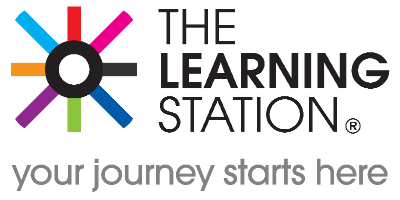Communication is something that we take for granted. Whenever want to go an interact with someone, we go up and talk to them.
For any average person who is comfortable in a social setting, you don't need to think about what you need to say or how you need to say it.
But here's the thing, there are actually so many more ways to communicate. Beside talking, we subconsciously send out so many non-verbal signals through our own body language and facial expressions.
Sometimes, we can pick up on things like this. It's why we can tell if someone is either confident or nervous.
So when we're trying to speak to someone who has a learning disability, there are other avenues that we can explore.
It is a challenge to speak to someone who has a learning disability. But you also need to look at it from their point of view.
If the person that you're speaking to is deaf, they would not to able to hear what you are saying. So they will pick up on your body language to try and understand what you're communicating.
If you're an aspiring health and social care worker or looking after a loved one who has learning disability, this blog post aims to share 5 tips on how you can communicate effectively with people who have learning disabilities:
1. Understand The Level Of Disability
Firstly, take into account the extent of the person's learning disability who you need to communicate with. This will help guide you in respect of the best way to approach the individual.
You can also review any background information available in relation to that person to get an understanding of their capabilities.
2. Take A Look At Yourself
Take an honest look at your own behaviour when communicating to determine how others perceive you. Make a conscious effort to be aware of your behaviours and speech patterns during a casual conversation with someone close to you, and consider how this might need to be adapted when communicating with someone with learning disabilities.
If you find it difficult to consider yourself from someone else's point of view, you can always ask someone you trust for some feedback on anything they notice.
3. Express Yourself Clearly
You may assume that you only need to speak to be able to express yourself, but this is not always the case. You'll be surprised by the number bad habits you have picked up along the way when you're speaking.
Consider whether you express yourself clearly or whether you are prone to mumbling or speaking so quickly that your words run together.
Once you are aware of any potential issues, you can proceed to work on them.
4. Show And Tell
When communicating with someone with learning disabilities, there will probably be occasions when words are not enough to be able to get your point across. When this is the case, you can use physical objects to aid the conversation.
For example, if you are finding it difficult to get a response as to what someone might want to eat, you can use picture cards or even accompany the person into the kitchen to point out the food available.
Being able to 'show' in this manner can also apply to your body language as well. It is easily forget to do things like smiling, even when you have good intentions. It is the little things that matter.
5. Be Patient
Consider how frustrating it must be for the person with learning disabilities to be regularly misunderstood, and keep this in mind in your dealings with them. This may help you to be patient in your communications and prevent frustration. Being able to empathise will play a large part in successfully getting your point across to someone with learning disabilities.
Considering a Career in Health and Social Care?
If you would like to pursue a career health and social care, then
The Learning Station can help. We're an accredited online training provider who specialise in delivering online distance courses. Our health and social care courses have helped many individuals achieve their dream of working in this sector.
For more information please visit
our courses page.
Thanks for reading. Do you know of any other tips? Please let us know in the comments section below.
Featured image:
Pixabay 


 Student Login
Student Login My Account
My Account